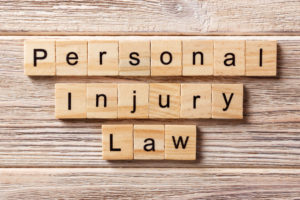Do I Have A Premises Liability Claim?
 Each year, over eight million people visit the emergency room after a serious fall. That’s more people than drug overdoses, motor vehicle crashes, and other types of injuries combined.
Each year, over eight million people visit the emergency room after a serious fall. That’s more people than drug overdoses, motor vehicle crashes, and other types of injuries combined.
These injuries usually involve substantial medical bills. In many cases, hospitalization alone may exceed $100,000. Serious, long-term injuries cause substantial noneconomic damages as well. These damages include items like loss of consortium (companionship), pain and suffering, loss of enjoyment in life, and emotional distress.
To obtain this compensation, victim/plaintiffs basically need to establish two elements in court.
Legal Duty
To determine duty, many states use a classification system based on English common law. This system divides victims into:
- Invitees,
- Licensees, and
- Trespassers.
There are some problems with this system. First, unless they speak fluent Legalese, no one really knows what an “invitee” or “licensee” is. Second, the categories often overlap. Just trust us on that one.
So, in 1995, Illinois lawmakers did away with the common law classification system and replaced it with a blanket duty of reasonable care. All owners have a duty to keep their properties reasonably safe for everyone who is lawfully on that property. Some factors in the duty of reasonable care include:
- Property location,
- Degree of control (i.e. was there a renter),
- Likelihood of harm,
- Difficulty in protecting against the harm, and
- Probable severity of injury.
In some cases, the duty of reasonable care may also apply to non-invited victims. For example, the attractive nuisance rule protects child victims who innocently play near swimming pools and other hazards.
Establishing Knowledge in Rockford Premises Liability Cases
For liability to attach, the owner must know about the dangerous condition., Victims can use either direct or circumstantial evidence to establish knowledge.
Many times, property owners admit, in a deposition or some other forum, that they knew about the hazard. Other times, an attorney uncovers a “smoking gun” during discovery. That could be security camera footage or an internal alert e-mail.
Other times, victim/plaintiffs must use circumstantial evidence to prove constructive knowledge (should have known). Illinois and most other states use a variation of the time-notice rule to establish constructive knowledge.
Here’s how that rule works. Assume that the victim slipped and fell on a banana peel. The condition of the peel may determine knowledge:
- Black Peel: If the hazard had been there for quite some time, liability usually attaches. The owner had ample opportunity to correct the situation yet did not do so.
- Yellow Peel: A recent hazard has the opposite effect. If the danger just occurred, the owner had no chance to learn about it or correct it.
- Brown Peel: Brown peels are in a gray area. The victim/plaintiff must introduce additional evidence to establish knowledge.
In Rockford civil court, victim/plaintiffs must establish facts by a preponderance of the evidence (more likely than not).
Work with Experienced Attorneys
Simple slip-and-fall cases often involve complex legal issues. For a free consultation with an experienced personal injury lawyer in Rockford, contact Fisk & Monteleone, Ltd. We routinely handle matters in Winnebago County and nearby jurisdictions.
